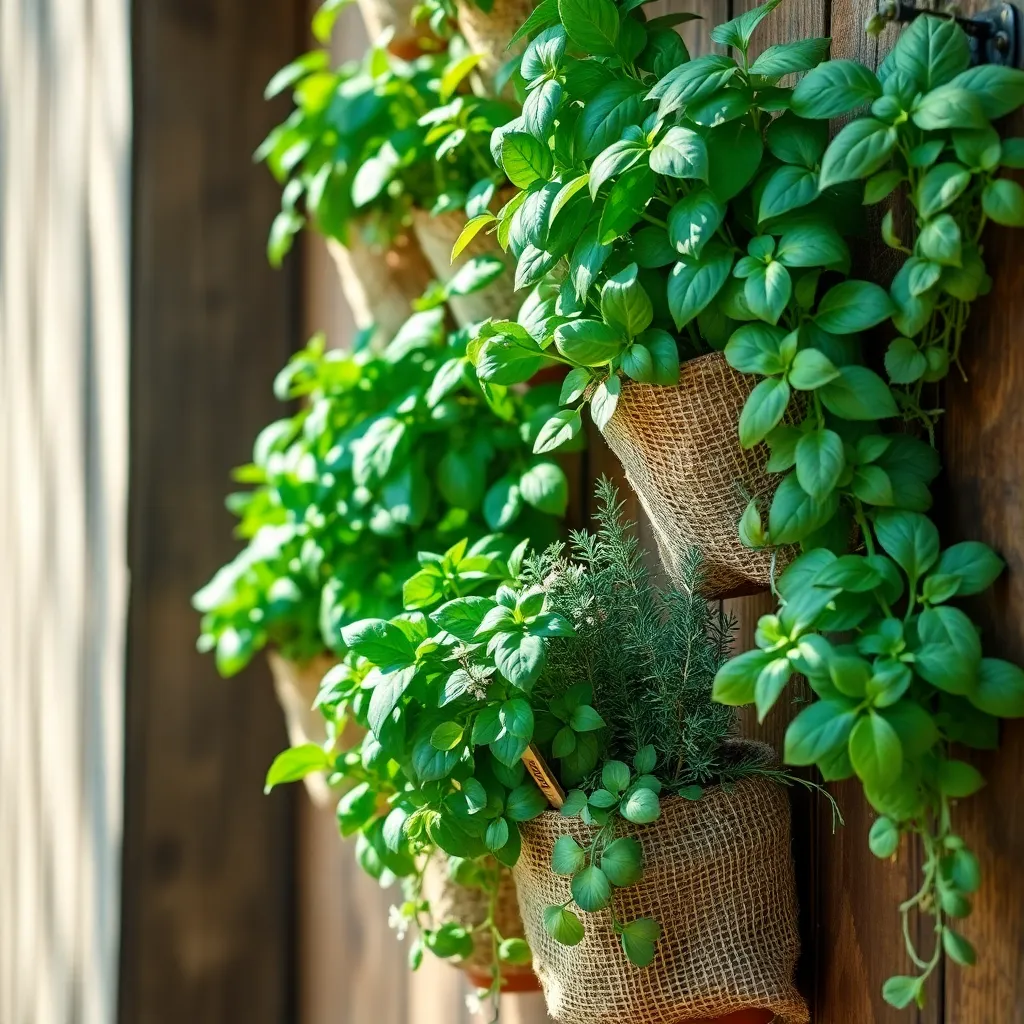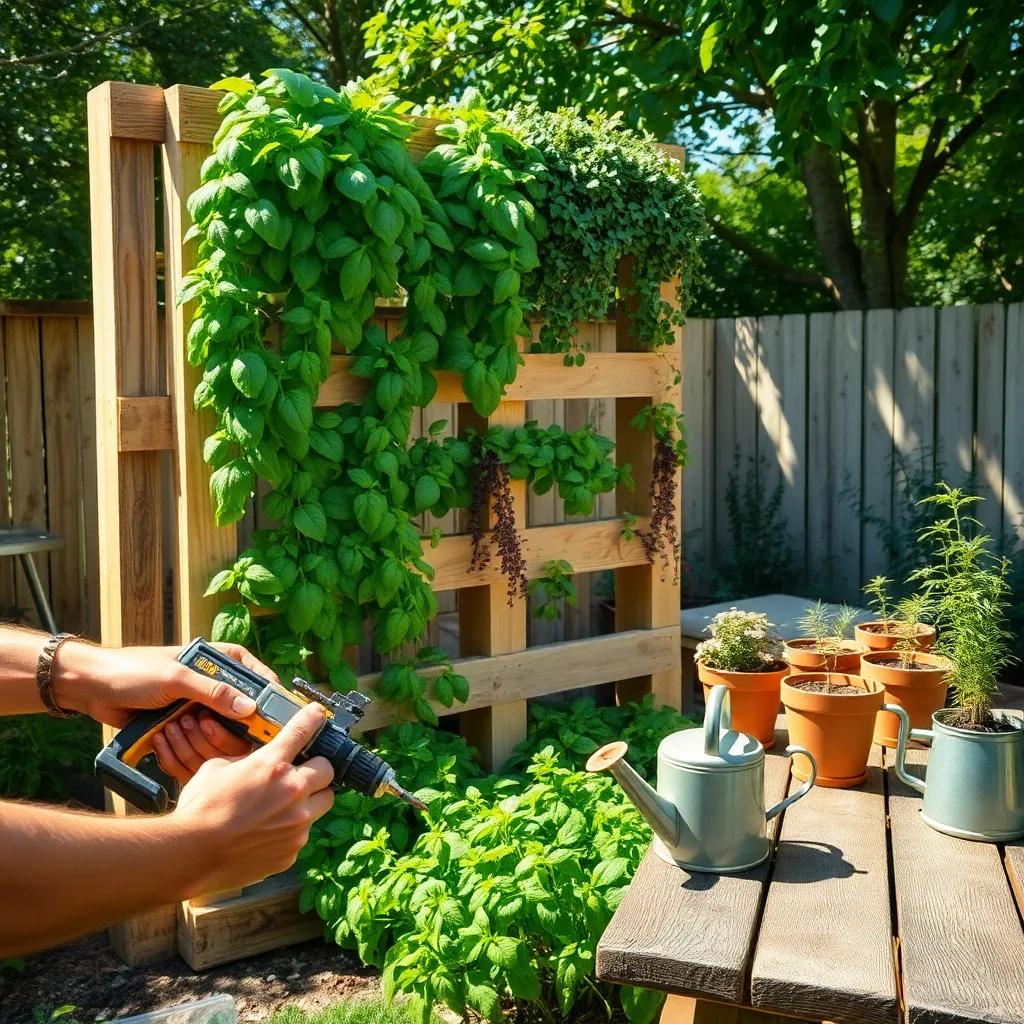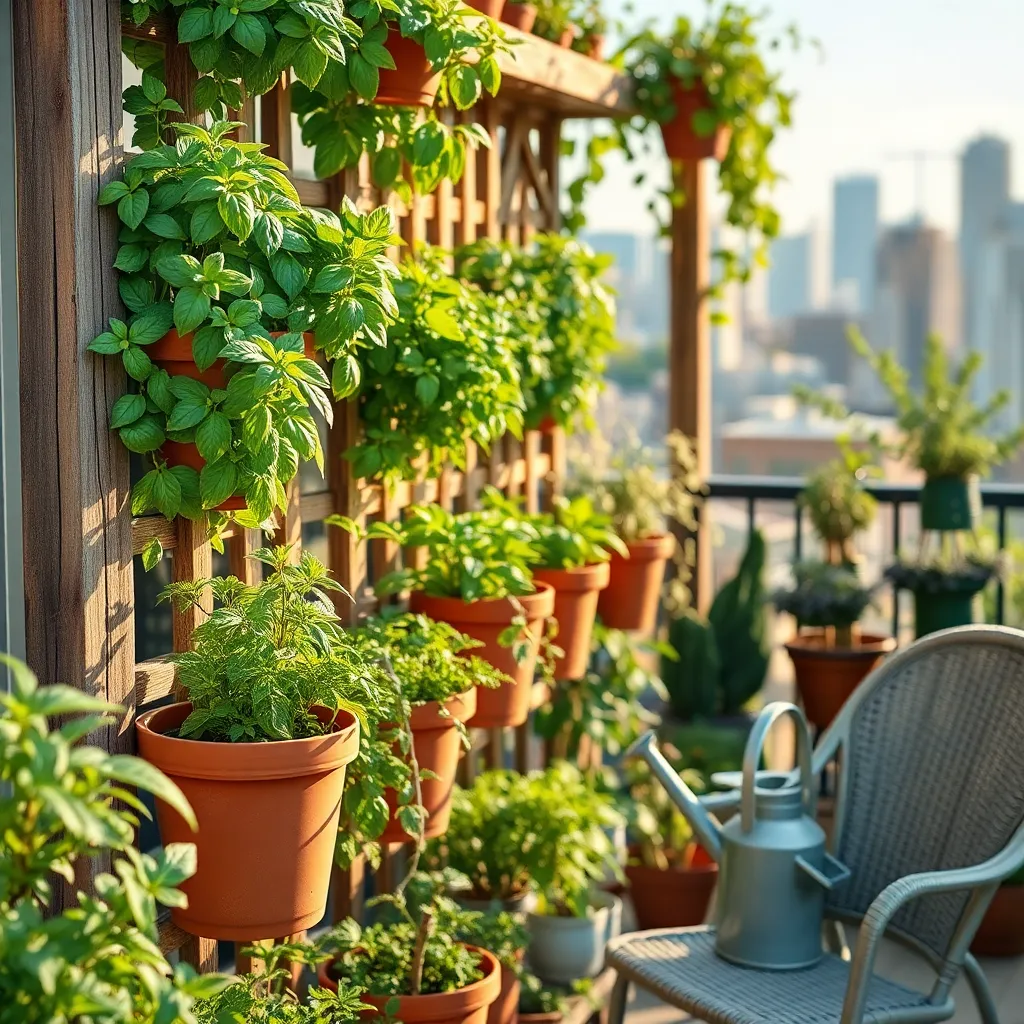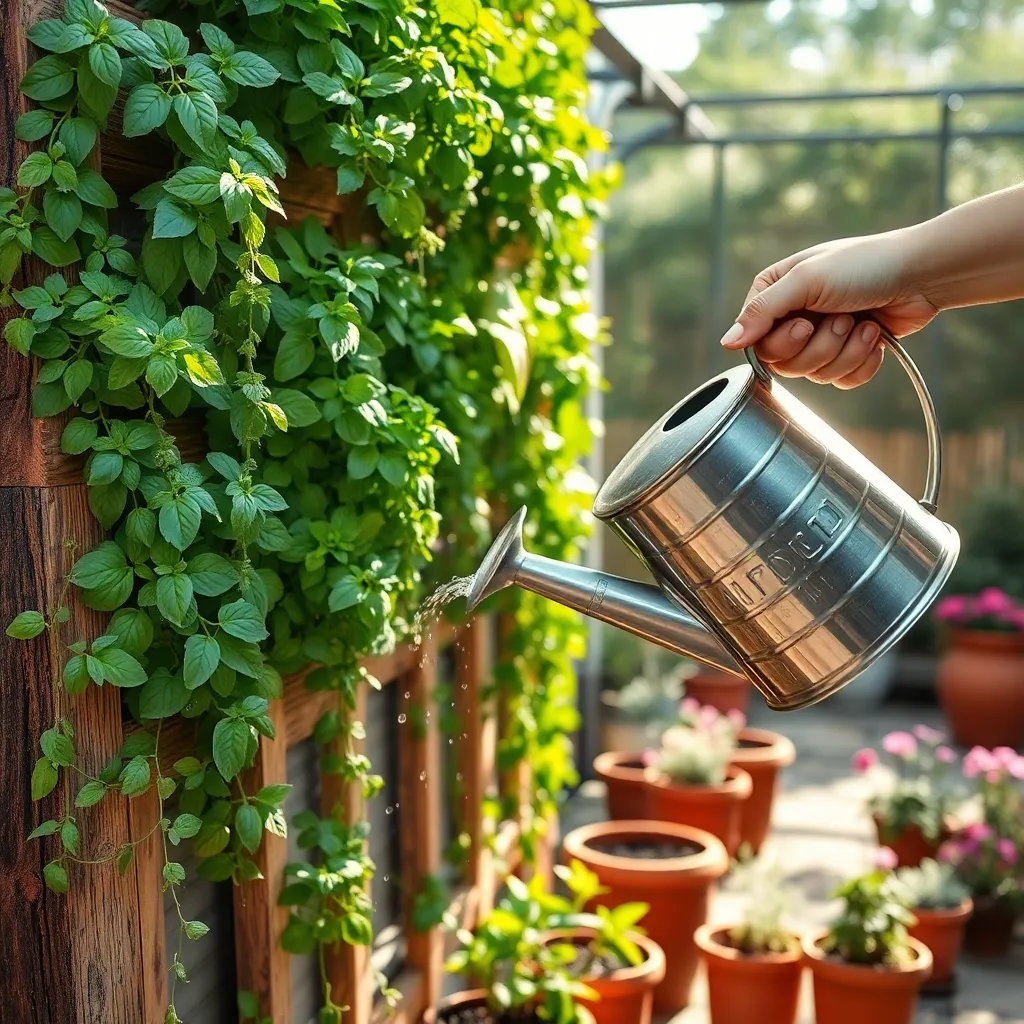Imagine stepping into your kitchen and plucking fresh basil or thyme right off the wall—it’s not just a dream, but an achievable reality with a vertical herb garden. Whether you’re a novice green thumb or a seasoned horticulturist, creating a lush, aromatic tapestry of herbs in a vertical setup can transform your living space into a fresh culinary haven and a personal sanctuary.
Vertical herb gardens are more than just a trendy gardening technique; they’re a powerful solution for maximizing space and enhancing your home’s aesthetic and sensory appeal. In this article, we’ll delve into the essentials of starting your own vertical herb garden, exploring everything from choosing the right herbs and containers to understanding light requirements and watering techniques.
You’ll discover practical tips tailored to both small apartment balconies and sprawling garden landscapes, ensuring everyone can find a solution that fits their space. By the end, you’ll be equipped with the knowledge and confidence to nurture a thriving vertical herb garden that brings beauty, flavor, and a touch of nature into your everyday life.
Select Ideal Location for Setup

When starting a vertical herb garden, it’s crucial to select a location that offers the right amount of sunlight. Most herbs thrive in full sun, which means they need at least six hours of direct sunlight each day.
If you live in a region with intense summer heat, consider a spot that provides some afternoon shade to prevent the herbs from wilting. Alternatively, you can use shade cloths or plant taller herbs to offer natural protection.
It’s important to also consider access to water when choosing your location. Ensure your vertical setup is positioned near a water source or that you have a convenient method for watering, such as a drip irrigation system.
For those who are more experienced, think about how the location affects air circulation since good airflow can help prevent fungal diseases. Positioning your garden where it can catch a gentle breeze can enhance plant health.
Choose Suitable Herb Varieties

When starting a vertical herb garden, selecting suitable herb varieties is crucial for success. Choose herbs that thrive in limited space and can adapt to vertical growth, such as basil, mint, and thyme.
Basil is an excellent choice for vertical gardens due to its vertical growth habit and adaptability. Ensure it receives at least six hours of sunlight daily and keep the soil consistently moist but not waterlogged.
Mint is another fantastic option, as it grows vigorously and can fill vertical spaces quickly. Use a well-draining potting mix and avoid overwatering to prevent root rot.
Thyme is perfect for vertical gardens because of its compact size and drought tolerance. Plant it in a sunny spot and allow the soil to dry out between waterings to mimic its natural environment.
For more advanced gardeners, consider adding rosemary to your vertical garden. It requires well-drained soil, full sun, and occasional pruning to maintain its shape and promote new growth.
Assemble Vertical Garden Structure

When assembling a vertical garden structure, it’s essential to first choose a framework that suits both your space and aesthetic preferences. Options like wooden pallets, wall-mounted planters, or tiered shelving units can serve as excellent bases for your vertical herb garden.
Ensure that your chosen structure can support the weight of the soil and plants. For outdoor setups, use materials that are weather-resistant, such as treated wood or galvanized metal, to increase the longevity of your garden.
Next, secure your structure in a location that receives adequate sunlight, typically six to eight hours a day for most herbs. Use a level and sturdy surface to prevent any tilting or toppling, especially when the structure is fully planted and watered.
For optimal plant health, consider incorporating a drip irrigation system or self-watering planters. This ensures consistent moisture levels and reduces the risk of over- or under-watering, which is crucial for herbs that prefer well-drained soil.
As a more advanced tip, line the back of your structure with a moisture-retentive fabric to help retain humidity and minimize water loss. This approach can be particularly beneficial in regions with hot or dry climates, ensuring your herbs thrive even under challenging conditions.
Plant Herbs in Containers

Planting herbs in containers is an excellent way to maximize space in your vertical garden. Choose containers that have good drainage holes to prevent waterlogging. The right soil mix is crucial for healthy herb growth. Opt for a lightweight potting mix enriched with organic matter to provide essential nutrients.
When selecting herbs for container planting, consider their light requirements. Most herbs, such as basil, thyme, and rosemary, thrive in full sun, requiring at least six to eight hours of direct sunlight daily. However, herbs like parsley and mint can tolerate partial shade, making them versatile choices if your garden has mixed light conditions.
Watering is a critical aspect of container gardening. Herbs generally prefer soil that is kept consistently moist but not soggy. A good rule of thumb is to water when the top inch of soil feels dry to the touch. Installing a self-watering system or using moisture-retentive pots can help maintain the ideal moisture level.
Fertilization is another key component of container herb gardening. Utilize a balanced, water-soluble fertilizer every four to six weeks during the growing season to ensure your herbs have a steady supply of nutrients. For advanced care, consider using a liquid seaweed or fish emulsion to provide trace minerals that promote robust growth.
Maintain Regular Watering Schedule

Ensuring a consistent watering schedule is crucial for the success of your vertical herb garden. Herbs grown vertically can dry out faster than those planted in the ground due to increased exposure to air and sunlight.
It’s important to check the moisture level of your containers regularly. Insert your finger about an inch into the soil; if it feels dry, it’s time to water.
Water deeply to ensure that the roots receive adequate moisture, but be careful not to overwater, as this can lead to root rot. A general guideline is to water your herbs when the top inch of soil feels dry.
Consider using a drip irrigation system or self-watering planters to maintain optimal soil moisture levels. These systems can be particularly beneficial in warmer climates or during the summer months when evaporation rates are higher.
For more advanced gardeners, monitoring the humidity around your vertical garden can help maintain the right conditions. If the air is too dry, misting the plants or placing a humidifier nearby can create a more favorable environment for your herbs.
Conclusion: Growing Success with These Plants
In embracing the art of starting a vertical herb garden, we’ve unearthed five key relationship concepts: the importance of nurturing growth, the patience required for blossoming connections, the value of creating shared spaces, the joy of collaborating on a project, and the resilience needed to weather both challenges and triumphs. These principles mirror the essence of cultivating healthy, thriving relationships.
As your actionable next step, choose one herb to plant together with a loved one today. Let it symbolize the commitment to nurturing your bond, fostering patience, and celebrating small victories. This simple act can spark meaningful conversations and strengthen your connection.
Remember to save or bookmark this article, so these insights remain at your fingertips whenever you need a reminder of the seeds you are sowing in your relationships. As you embark on this journey, envision a future where your relationships are not only sustained but flourish with vitality and love. With each step you take, you’re not just growing herbs; you’re cultivating the garden of your relationships, ensuring they thrive for years to come.
